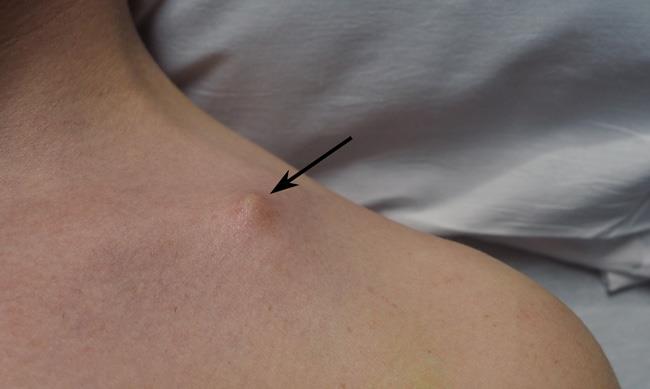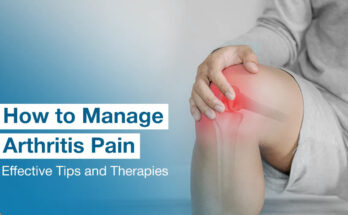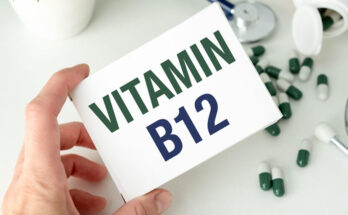Broken Collarbone Treatment: A broken collarbone, or clavicle fracture, is a common injury that can occur due to various reasons such as falls, sports accidents, or vehicular impacts.
Understanding the diagnosis and treatment of this condition is crucial for effective recovery and preventing long-term complications.
What is a Broken Collarbone?
A broken collarbone, medically known as a clavicle fracture, is a common injury that occurs in the bone that runs horizontally between the top of your breastbone and your shoulder blade. This bone is crucial for connecting the arm to the body and plays a vital role in the overall movement and functionality of the shoulder.
Anatomy of the Collarbone and Its Role in the Body
The collarbone, or clavicle, is a long, slender bone that serves several important functions in the body. It acts as a support beam for the shoulder, allowing for a wide range of movements. This bone also protects the nerves and blood vessels that pass underneath it from the neck to the arm. Additionally, the collarbone is connected to several muscles, which aids in the movement of the arms and shoulders, as well as providing structural support.
Common Causes and Risk Factors for Breaking a Collarbone
Breaking a collarbone can happen to anyone, but certain factors can increase the risk. The most common cause is a fall onto the shoulder or an outstretched hand. This is often seen in sports-related injuries, bicycle accidents, or during slips and falls. Infants can also suffer from clavicle fractures during the birth process.
Some risk factors include:
- Participation in contact sports: Sports like football, rugby, or wrestling increase the risk of falls or direct impacts to the collarbone.
- High-impact activities: Cycling, skiing, or skateboarding, where falls are common, can lead to a higher incidence of collarbone fractures.
- Osteoporosis: This condition weakens bones, making them more susceptible to breaks.
- Age: Younger people, especially children and teenagers whose bones are still developing, are at a higher risk of clavicle fractures.
Understanding the anatomy and functions of the collarbone, along with the common causes and risk factors of a fracture, can help in both prevention and early detection of this injury. If you suspect a broken collarbone, seeking medical attention promptly is crucial for proper healing and recovery.
Signs and Symptoms of a Broken Collarbone
Understanding the signs and symptoms of this injury is crucial for timely medical intervention and proper healing. Here’s a comprehensive guide to recognizing a broken collarbone:
Key Indicators of a Broken Collarbone:
Severe Pain: The most noticeable symptom is immediate, sharp pain in the collarbone area, often intensifying when you try to move your arm.
Swelling and Tenderness: The affected area may swell and become tender to the touch, indicating trauma to the bone and surrounding tissue.
Bruising and Discoloration: Look out for bruising or discoloration around the collarbone, which usually appears shortly after the injury.
Audible Snap or Grinding Noise: Some people report hearing a snap or feeling a grinding sensation at the moment of injury, which is a telltale sign of a fracture.
Difficulty in Arm Movement: You might find it challenging to lift your arm due to pain or a mechanical obstruction from the broken bone.
Visible Deformity: In severe cases, the broken bone may cause a noticeable bump or change in the contour of your collarbone.
Sagging Shoulder: The injured side’s shoulder may appear to sag downward and forward compared to the uninjured side.
When to Seek Medical Attention:
- Immediate Severe Pain: If you experience intense pain following an injury or impact to your collarbone area, it’s essential to seek medical attention.
- Visible Deformities or Abnormalities: Any noticeable changes in the shape of your collarbone or shoulder alignment should prompt a visit to a healthcare provider.
- Persistent Symptoms: If pain, swelling, or difficulty in moving your arm persists for more than a few days, it’s advisable to consult a doctor.
- Inability to Use the Arm: Difficulty or inability to use your arm normally is a sign that you need medical evaluation.
Early diagnosis and treatment of a broken collarbone can significantly improve recovery outcomes. Don’t hesitate to consult a healthcare professional if you suspect a fracture. Remember, timely medical care is key to ensuring proper healing and avoiding complications.
Diagnosis of a Broken Collarbone
Accurate diagnosis is crucial for effective treatment and swift recovery. Here’s an overview of the procedures and tests used to diagnose a broken collarbone, highlighting the importance of accurate diagnosis in the treatment process.
Procedures and Tests for Diagnosing a Broken Collarbone
Physical Examination: Initially, a healthcare provider will conduct a thorough physical examination. They will look for telltale signs such as swelling, tenderness, and bruising around the collarbone area. The shape of the collarbone may also indicate a break, especially if there is an obvious deformity.
Medical History Review: Understanding the circumstances leading to the injury is essential. The doctor will inquire about recent accidents or traumas, such as falls or sports injuries, which are common causes of collarbone fractures.
Imaging Tests:
- X-rays: This is the most common imaging test used to confirm a collarbone fracture. X-rays can show if the bone is broken and whether there is a displacement (a gap between broken bone pieces).
- Computed Tomography (CT) Scans: In more complex cases, a CT scan may be necessary to get detailed images of the bone and surrounding tissues.
- Magnetic Resonance Imaging (MRI): Although not commonly used for collarbone fractures, an MRI might be recommended if there’s a suspected injury to the surrounding ligaments or soft tissues.
Assessment of Range of Motion: The doctor may assess the range of motion in the shoulder joint adjacent to the broken collarbone. This helps in understanding the impact of the fracture on joint mobility.
The Importance of Accurate Diagnosis in Effective Treatment
An accurate diagnosis of a broken collarbone is fundamental for several reasons:
Determining the Severity: Not all collarbone fractures are alike. The type of fracture (simple, compound, comminuted, etc.) determines the treatment approach.
Preventing Complications: Misdiagnosis or delayed diagnosis can lead to complications like nonunion (where the bone doesn’t heal properly) or malunion (where the bone heals in a wrong position).
Tailoring the Treatment Plan: Treatment can vary from simple arm support and rest to surgical intervention. The course of action depends on the fracture’s specifics, ascertained through proper diagnosis.
Monitoring Healing Progress: Regular check-ups and possibly repeat imaging tests are essential to monitor the healing process and adjust treatment as needed.
Diagnosing a broken collarbone involves a combination of physical assessments, medical history reviews, and imaging tests. An accurate diagnosis is crucial to determine the appropriate treatment plan, prevent potential complications, and ensure a smooth and effective healing process. If you suspect a collarbone fracture, seek medical attention promptly for the best outcomes.
Treatment Options for a Broken Collarbone
We’ll explore the non-surgical and surgical treatments available and discuss the vital role of rehabilitation in recovery.
Non-Surgical Treatments
Non-surgical treatments are often the first line of defense against a broken collarbone, especially in cases where the break is simple and the bone pieces have not shifted significantly. These methods are less invasive and can be highly effective.
Arm Support: Immobilization is key. The most common approach is using a sling to keep the arm and shoulder from moving, allowing the bone to heal naturally.
Pain Management: Over-the-counter pain relievers, like acetaminophen or ibuprofen, can help manage pain and reduce inflammation.
Physical Therapy: Once the bone starts to heal, physical therapy plays a crucial role in restoring strength and flexibility to the shoulder.
Surgical Treatments
In more severe cases, where the bone is significantly displaced or shattered, surgical intervention may be necessary. Surgery aims to realign the broken bone pieces and secure them in place, facilitating proper healing.
Open Reduction and Internal Fixation (ORIF): This procedure involves repositioning the bone fragments into their normal alignment and securing them with plates and screws.
Pin Fixation: For smaller or more straightforward breaks, surgeons may use metal pins to hold the bone pieces together.
Bone Grafting: In cases where the bone is severely damaged, a bone graft may be required to provide additional support and facilitate healing.
Role of Rehabilitation in Recovery
Rehabilitation is an indispensable part of the recovery process, whether you undergo surgery or opt for non-surgical treatment. It involves a series of physical therapy exercises aimed at restoring shoulder strength, flexibility, and range of motion.
Early Mobility: Starting with gentle movements early in the recovery process helps prevent stiffness and improves circulation.
Strength Training: Gradually increasing exercises to build strength is crucial for full recovery.
Customized Recovery Plan: Each patient’s situation is unique, and rehabilitation programs are tailored to meet individual needs and progress.
Recovery from a broken collarbone requires patience and adherence to the treatment plan prescribed by healthcare professionals. Whether through non-surgical methods, surgical intervention, or a combination of both, followed by dedicated rehabilitation, healing and regaining full functionality is entirely achievable.
Home Care and Management for a Broken Collarbone
Here, we’ll delve into practical tips for managing a broken collarbone at home and discuss lifestyle adjustments and precautions that are essential during your recovery period.
1. Pain Management and Comfort
Ice Therapy: Apply ice packs to the affected area for 15-20 minutes every few hours to reduce swelling and pain. Always wrap the ice pack in a cloth to prevent ice burn.
Rest and Positioning: Ensure ample rest and avoid movements that strain your collarbone. Sleep in a reclined position or use a special wedge pillow to maintain a comfortable posture.
2. Medication and Treatment Follow-up
Over-the-Counter Pain Relief: Use over-the-counter pain relievers like acetaminophen or ibuprofen as directed by your doctor.
Regular Doctor Visits: Keep up with your scheduled doctor appointments to monitor the healing process and make any necessary adjustments to your treatment plan.
3. Lifestyle Adjustments
Limit Physical Activity: Avoid heavy lifting and strenuous activities. Gradually reintroduce activities as recommended by your healthcare provider.
Adapt Daily Routines: Modify your daily activities to avoid putting pressure on your collarbone. This may include using a single-arm for tasks or wearing button-down shirts for easy dressing.
4. Use of Supportive Devices
Slings: Your doctor may recommend wearing a sling to immobilize your arm and provide support to your collarbone.
Ergonomic Aids: Consider using ergonomic tools and devices to assist with daily tasks and minimize strain.
5. Nutrition and Bone Health
Healthy Diet: Consume a balanced diet rich in calcium, vitamin D, and protein to support bone healing.
Hydration: Stay well-hydrated to facilitate overall health and recovery.
6. Emotional Well-being and Support
Seek Support: Reach out to family and friends for support in managing daily tasks.
Mental Health: Pay attention to your mental health. Healing can be emotionally taxing, so consider talking to a counselor if you’re feeling overwhelmed.
Managing a broken collarbone at home involves a combination of proper care, lifestyle adjustments, and adherence to medical advice. By following these tips, you can help ensure a more effective and comfortable recovery process. Remember, every healing journey is unique, so it’s important to listen to your body and consult with your healthcare provider regarding any concerns or changes in your condition.
Preventing Future Collarbone Injuries
The path to recovery can be challenging, and the prospect of re-injury is a significant concern. In this section, we will explore strategies to reduce the risk of future collarbone injuries and highlight the importance of strengthening and conditioning exercises.
Strategies to Reduce the Risk of Re-Injury
Gradual Return to Activity: After a collarbone injury, it’s crucial to return to physical activity gradually. Rushing this process can increase the risk of re-injury.
Protective Gear: Using appropriate protective equipment, such as padded clothing or braces, can provide additional support to the collarbone area.
Technique Modification: Modifying techniques and forms in sports or activities to reduce stress on the collarbone is essential. Professional guidance can be beneficial.
Awareness and Adaptation: Being aware of the environments and scenarios that increase injury risk and adapting activities accordingly can play a significant role in prevention.
Importance of Strengthening and Conditioning Exercises
Enhanced Muscle Support: Strengthening the muscles around the collarbone, including the shoulder and upper back muscles, provides better support and reduces strain on the clavicle.
Improved Joint Stability: Conditioning exercises improve the stability of the shoulder joint, which is crucial for preventing injuries, especially in repetitive motion sports.
Increased Flexibility and Range of Motion: Regular exercise enhances flexibility and range of motion, making the body more resilient to the forces that might cause injury.
Tailored Exercise Programs: It’s important to engage in a tailored exercise program designed by a physiotherapist or a professional trainer, ensuring the exercises are effective and safe.
Preventing future collarbone injuries requires a combination of careful planning, protective measures, and a dedicated approach to strengthening and conditioning. By incorporating these strategies and focusing on physical fitness, individuals can significantly reduce their risk of re-injury and maintain an active, healthy lifestyle.
FAQs: Broken Collarbone Treatment
What is the most common treatment for a broken collarbone?
The most common treatment for a broken collarbone is immobilization using a sling. This helps to keep the bone in position and allows it to heal naturally. Depending on the severity of the break, your doctor may recommend wearing the sling for a few weeks to several months.
Can a broken collarbone heal on its own?
Yes, most broken collarbones can heal on their own with proper care and rest. Immobilization with a sling, pain management, and physical therapy are usually sufficient. However, in more severe cases, surgery may be necessary to align the bones properly.
How long does it take for a broken collarbone to fully heal?
The healing time for a broken collarbone varies but typically ranges from 6 to 12 weeks for adults. Children and teenagers may heal faster. It’s important to follow your doctor’s recommendations and not rush the healing process to avoid complications.
What are the signs that my collarbone is not healing correctly?
Signs that your collarbone is not healing correctly include persistent pain, swelling, or deformity in the collarbone area, limited shoulder movement, or a feeling that the bones are grinding against each other. If you experience any of these symptoms, contact your doctor immediately.
Can I still exercise with a broken collarbone?
While heavy exercise should be avoided, gentle movements and exercises may be recommended as part of your recovery process. It’s important to consult with your doctor or a physical therapist to understand which exercises are safe for your specific condition.
Is surgery always required for a broken collarbone?
Surgery is not always required for a broken collarbone. It is typically considered when the bone is severely displaced or broken in multiple pieces. Your doctor will evaluate the severity of your injury and discuss the best treatment options with you.
How can I manage pain during the healing process?
Pain management for a broken collarbone usually involves over-the-counter pain relievers such as ibuprofen or acetaminophen. In some cases, your doctor may prescribe stronger medication. Applying ice to the affected area can also help reduce pain and swelling.
What are the potential complications of a broken collarbone?
Potential complications of a broken collarbone include nonunion (when the bone doesn’t heal properly), malunion (when the bone heals in an incorrect position), nerve or blood vessel damage near the collarbone, and arthritis in the shoulder over time.
Conclusion
It is essential for individuals who suspect they have a broken collarbone to seek professional medical advice promptly. Only a qualified healthcare provider can accurately diagnose the injury and recommend the appropriate course of treatment. Delaying professional evaluation can lead to complications and a longer recovery period.
Remember, the information provided here is for educational purposes and should not replace professional medical advice. If you’re experiencing symptoms of a broken collarbone, or if you’ve sustained an injury that might have resulted in one, consult a healthcare professional immediately for a proper assessment and personalized treatment plan. Prioritizing your health and following expert guidance is the best way to ensure a speedy and effective recovery.



